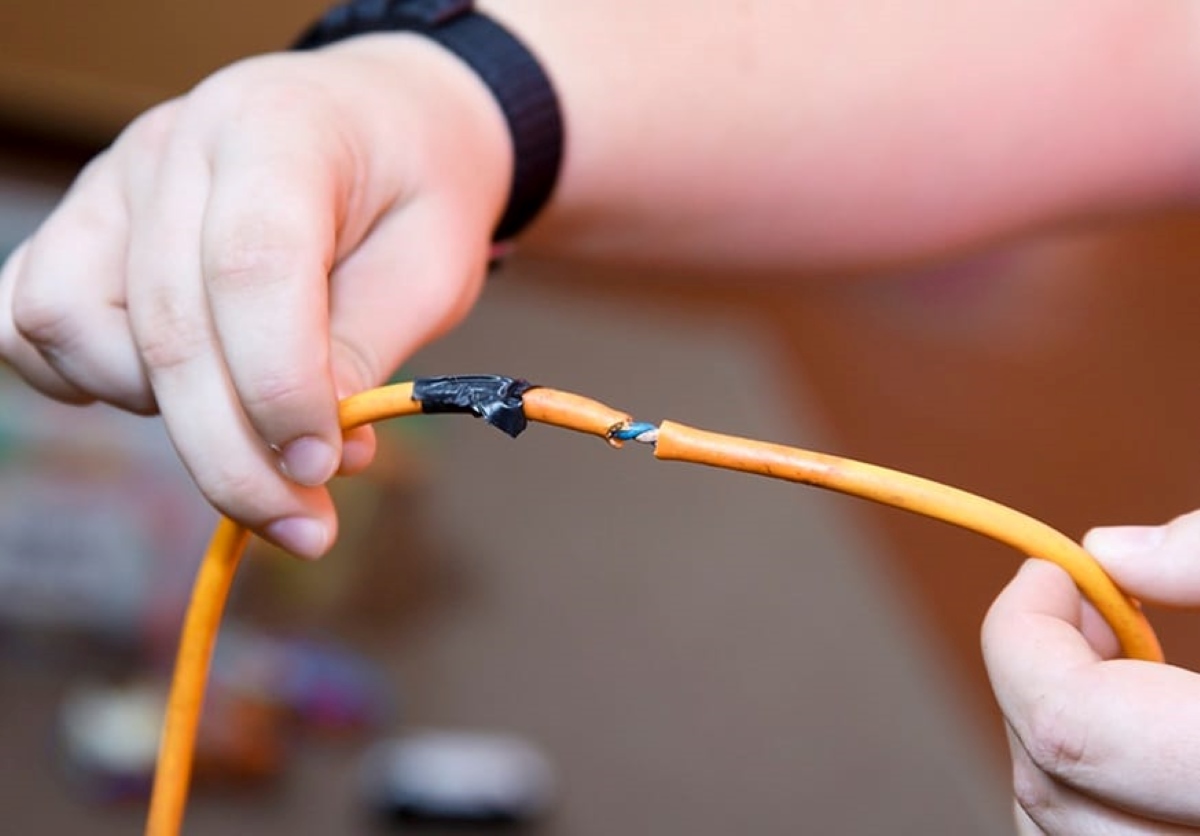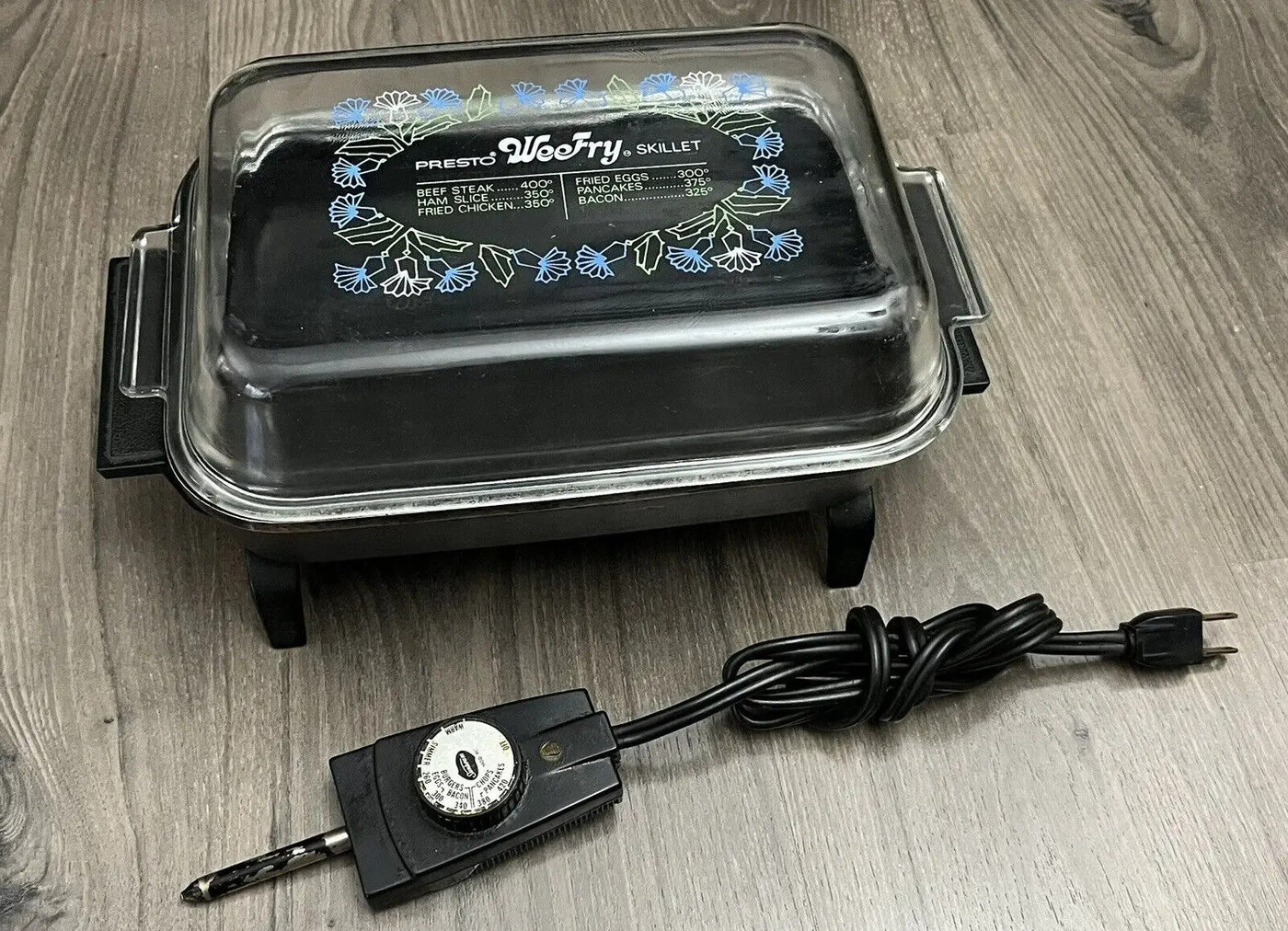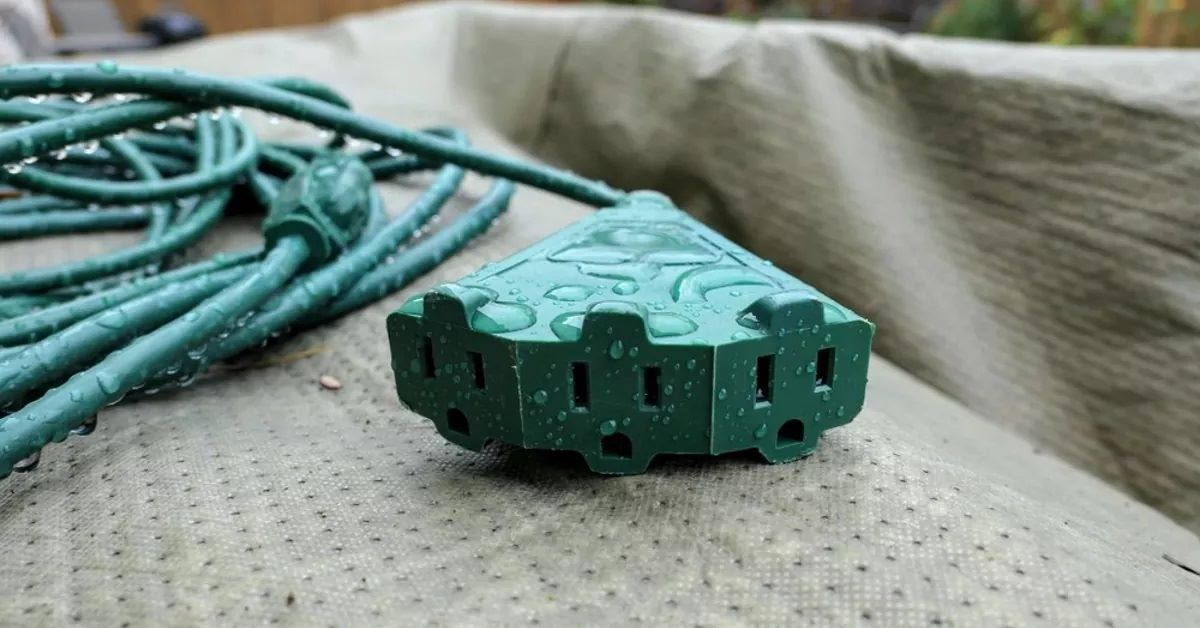Home>Articles>What To Do When You Notice Small Spots Or Prongs On Your Electrical Cord


Articles
What To Do When You Notice Small Spots Or Prongs On Your Electrical Cord
Modified: October 27, 2024
Discover the importance of articles when it comes to identifying prongs on an electrical cord. Learn about the different types and how to spot potential hazards.
(Many of the links in this article redirect to a specific reviewed product. Your purchase of these products through affiliate links helps to generate commission for Storables.com, at no extra cost. Learn more)
Introduction
Welcome to the world of electrical cords! These essential devices play a vital role in powering our daily lives, providing electricity to our appliances and devices. However, have you ever noticed small spots or prongs on your electrical cord? These seemingly harmless spots can actually indicate a potential issue that needs attention.
In this article, we will explore the causes of prongs on electrical cords as spots, discuss the potential hazards they can pose, and provide steps on how to identify and repair them. Additionally, we will offer tips on preventing prongs on electrical cords as spots from occurring in the future.
Understanding these aspects will not only help you maintain the safety and functionality of your electrical cords but also enable you to take proactive measures to prevent any potential hazards. So, let’s dive deeper into this topic and learn more about prongs on electrical cords as spots.
Key Takeaways:
- Identifying and addressing spots on electrical cord prongs is crucial to prevent electrical malfunctions, fire hazards, and potential electrocution. Regular maintenance and prompt repairs can ensure the safety and functionality of your devices.
- Preventing spots on prongs through proper handling, regular cleaning, and investing in surge protectors can minimize the risk of hazards and extend the lifespan of electrical cords. Proactive measures contribute to a safer living environment and peace of mind.
Causes of Prongs on Electrical Cord as Spots
Prongs on electrical cords can develop spots for several reasons. These spots are typically the result of wear and tear or specific environmental factors. Let’s take a closer look at some of the common causes:
- Corrosion: One of the primary causes of spots on prongs is corrosion. Moisture or exposure to air can lead to the formation of rust or oxidation on the metal prongs, resulting in spots or discoloration.
- Overheating: Excessive heat generated due to overloading or prolonged use of electrical devices can cause the prongs to develop spots. This can happen when the metal prongs are exposed to high temperatures for extended periods.
- Physical Damage: Physical damage to the electrical cord, such as bending, crushing, or pulling, can lead to spots on the prongs. These spots may occur due to the disruption of the protective coating or the distortion of the metal surface.
- Chemical Exposure: Exposure to chemicals or corrosive substances can also result in spots on the prongs. This could happen if the cord comes into contact with cleaning agents, solvents, or other chemical substances.
- Poor Manufacturing: In some cases, the spots on prongs may be a result of poor manufacturing processes or the use of substandard materials. This can lead to premature wear and degradation of the prongs, resulting in spots.
It’s important to note that these causes are not exhaustive, and there could be other factors contributing to the development of prongs as spots on electrical cords. Understanding these causes can help you identify the issue and take appropriate steps to address it.
Potential Hazards of Prongs on Electrical Cord as Spots
While prongs on electrical cords may seem like a minor issue, they can actually pose potential hazards if left unaddressed. Here are some of the risks associated with prongs on electrical cords as spots:
- Electrical Malfunctions: Spots on the prongs can disrupt the flow of electricity, leading to electrical malfunctions. This can result in intermittent power supply, flickering lights, or even complete power failure.
- Fire Hazards: The presence of spots on the prongs can increase the risk of electrical fires. If the spots cause poor electrical contact or create resistance, it can lead to heat generation, which can ignite nearby materials or even cause internal fires within the electrical cord.
- Electrocution: Faulty prongs can create electrical arcing or sparks, increasing the risk of electrocution. If someone comes into contact with exposed or damaged prongs, it can result in a severe electrical shock.
- Damage to Appliances: Poor electrical contact due to prongs with spots can cause fluctuations or surges in electricity. These fluctuations can damage sensitive electronic devices like computers, TVs, or kitchen appliances.
- Short Circuits: Spots on prongs can lead to short circuits if they create unintended connections between the live and neutral wires. Short circuits can result in tripped circuit breakers, overheating, or even electrical fires.
The potential hazards mentioned above emphasize the importance of taking prongs on electrical cords as spots seriously. Promptly addressing and rectifying these issues can prevent dangerous situations and promote the safe operation of your electrical devices.
How to Identify Prongs on Electrical Cord as Spots
Identifying prongs on electrical cords as spots is crucial in order to address and rectify the issue promptly. Here are some steps to help you identify spots on prongs:
- Visual Inspection: Start by visually examining the prongs on your electrical cord. Look for any discoloration, dark spots, or signs of corrosion on the metal surface of the prongs.
- Physical Examination: Feel the prongs with your fingers. If you notice any roughness, unevenness, or raised areas on the metal surface, it could indicate the presence of spots.
- Check for Discoloration: Spots on prongs often manifest as areas of discoloration, such as black, brown, or greenish hues. Pay careful attention to the prongs’ coloration and compare it to their original appearance.
- Inspect the Cord: Examine the cord itself for any visible signs of damage, fraying, or deterioration. Sometimes, the spots or corrosion may extend beyond the prongs and affect the surrounding parts of the cord.
- Perform a Functionality Test: Plug in the electrical cord and observe if there are any electrical malfunctions, flickering lights, or unusual behavior from the connected device. These issues can indicate poor electrical contact due to spots on the prongs.
It’s essential to remember that if you are unsure or suspect any problems with the electrical cord, it’s best to consult a qualified electrician or professional to assess the situation accurately.
By learning how to identify prongs on electrical cords as spots, you can take the necessary next steps to address the issue and ensure the safety of your electrical devices and the surrounding environment.
Inspect the prongs on your electrical cord for any signs of discoloration or dark spots. This could indicate overheating or damage, and the cord should be replaced to prevent potential hazards.
Steps to Repair Prongs on Electrical Cord as Spots
Repairing prongs on electrical cords with spots is essential to prevent potential hazards and maintain the functionality of your devices. Here are the steps to follow for effective repair:
- Disconnect the Cord: Ensure that the electrical cord is unplugged from the power source before you begin the repair process. This step is crucial to avoid any risk of electrical shock.
- Prepare Cleaning Solution: Create a cleaning solution by mixing mild soap or dish detergent with warm water. This solution will help remove dirt, grime, and corrosion from the prongs.
- Clean the Prongs: Use a soft cloth or a cotton swab dipped in the cleaning solution to gently clean the prongs. Be thorough and ensure proper cleaning of the entire surface of each prong, paying extra attention to the spots or areas of corrosion.
- Rinse and Dry: After cleaning, rinse the prongs with clean water to remove any residue from the cleaning solution. Once rinsed, dry the prongs completely using a dry cloth or allow them to air dry. Ensure that the prongs are completely dry before proceeding to the next step.
- Apply Electrical Contact Cleaner: Using a specialized electrical contact cleaner, spray a small amount onto the prongs. This cleaner helps to remove any remaining dirt, grease, or oxidation, ensuring optimal electrical contact.
- Secure the Prongs: If the prongs are loose or wobbly, gently bend them back into position using a pair of pliers or your fingers. Ensure that the prongs are aligned correctly and securely in their designated positions.
- Test the Repair: Once the repair is complete, test the electrical cord by plugging it into a power source and connecting a device. Ensure that the power supply is stable, and there are no signs of flickering lights or electrical malfunctions.
If you are unsure about any aspect of the repair or if the spots on the prongs persist after cleaning, it is advisable to seek assistance from a qualified electrician. They can provide professional guidance and help ensure the safety and proper functioning of your electrical cords.
Remember, regular maintenance and periodic inspection of your electrical cords can help prevent the recurrence of spots on the prongs and extend the lifespan of your devices.
Prevention of Prongs on Electrical Cord as Spots
Preventing the formation of spots on prongs of electrical cords is crucial to ensure the safety and longevity of your devices. By following these preventive measures, you can minimize the risk of developing spots and potential hazards:
- Proper Handling and Storage: When handling electrical cords, avoid pulling or yanking them forcefully. Instead, gently unplug them from the power source by gripping the plug itself. When storing cords, coil them loosely to prevent bending or twisting at the prongs.
- Keep Cords Dry: Moisture can accelerate the corrosion process on prongs. Keep your electrical cords dry and avoid using them in wet or damp areas. If the cords do get wet, allow them to dry completely before use.
- Regular Cleaning: Routinely clean the prongs of your electrical cords to remove any dirt, debris, or residue that may accumulate over time. Use a soft cloth or a cotton swab and a mild cleaning solution to gently wipe the prongs.
- Avoid Overloading Outlets: Plugging multiple high-wattage devices into a single outlet can lead to overheating of the electrical cord. Ensure that you distribute your devices across multiple outlets to prevent excessive strain on the cords and prongs.
- Inspect Cords Regularly: Conduct periodic inspections of your electrical cords to check for any signs of damage, fraying, or wear. If you notice any issues, such as exposed wires or deteriorated insulation, consider replacing the cord to prevent further damage.
- Use Surge Protectors: Invest in surge protectors to safeguard your devices from sudden power surges. Surge protectors not only offer protection against voltage spikes but also add an extra layer of safety for your electrical cords and prongs.
- Choose High-Quality Cords: Opt for quality electrical cords that are built to withstand wear and tear. Look for cords with reinforced connectors and durable insulation to ensure reliable performance and longevity.
By implementing these preventive measures, you can significantly reduce the likelihood of developing spots on the prongs of your electrical cords. This proactive approach will not only enhance the safety of your electrical devices but also extend their lifespan, saving you both time and money in the long run.
Conclusion
Prongs on electrical cords with spots may seem like a minor issue, but they can have significant implications on the safety and functionality of your devices. By understanding the causes, potential hazards, and proper identification of these spots, you can take the necessary steps to repair and prevent them.
Regular maintenance, such as cleaning the prongs and conducting inspections, can go a long way in preventing the formation of spots. Additionally, practicing safe handling and storage of electrical cords, avoiding overloading outlets, and investing in surge protectors are essential preventive measures to minimize the risk of spots developing on the prongs.
Should you encounter spots on the prongs of your electrical cord, follow the steps outlined in this article to address the issue. Clean the prongs, ensure proper alignment, and test the functionality after repair. If the problem persists or you are uncertain about the repair process, consult a professional electrician for assistance.
By being proactive in identifying, repairing, and preventing spots on prongs, you can ensure the safety of your electrical devices, protect against potential hazards like electrical malfunctions and fires, and extend the lifespan of your cords.
In conclusion, paying attention to the condition of your electrical cords and taking necessary actions will not only contribute to a safer living environment but also provide you with peace of mind knowing that your electrical devices are operating at their best.
Frequently Asked Questions about What To Do When You Notice Small Spots Or Prongs On Your Electrical Cord
Was this page helpful?
At Storables.com, we guarantee accurate and reliable information. Our content, validated by Expert Board Contributors, is crafted following stringent Editorial Policies. We're committed to providing you with well-researched, expert-backed insights for all your informational needs.















0 thoughts on “What To Do When You Notice Small Spots Or Prongs On Your Electrical Cord”